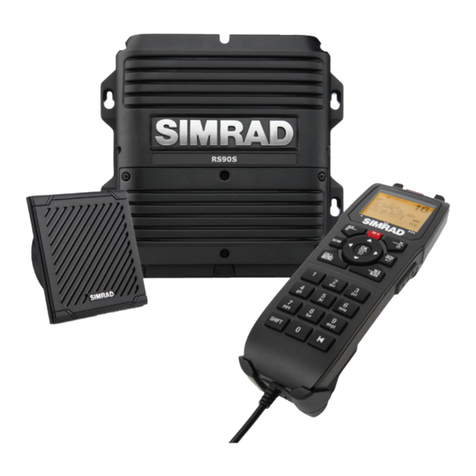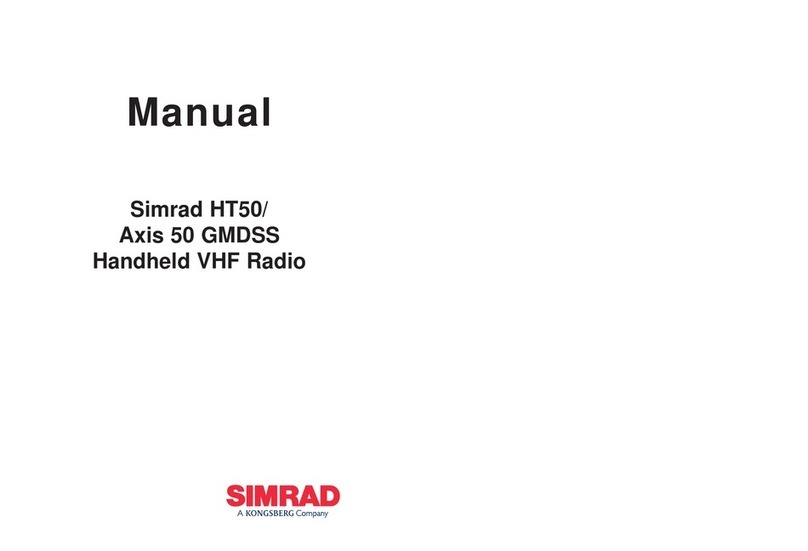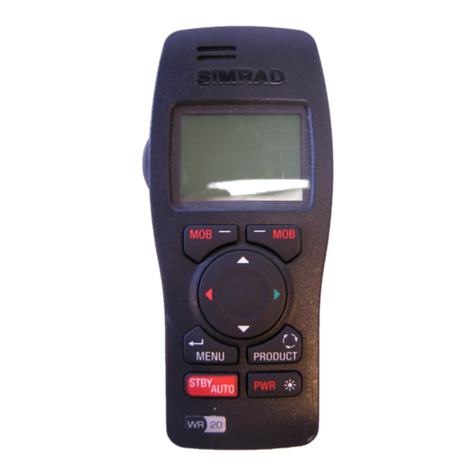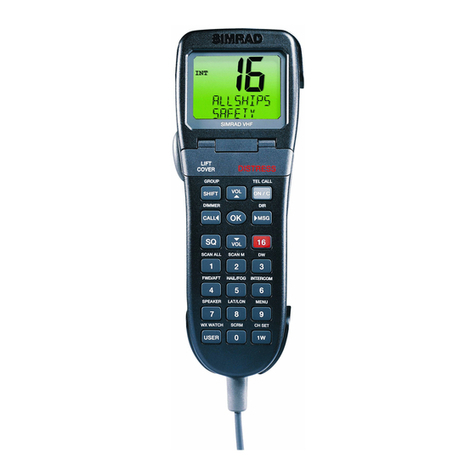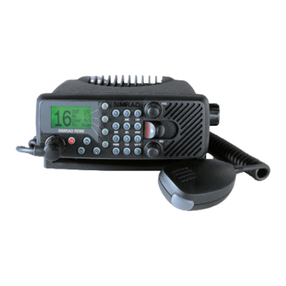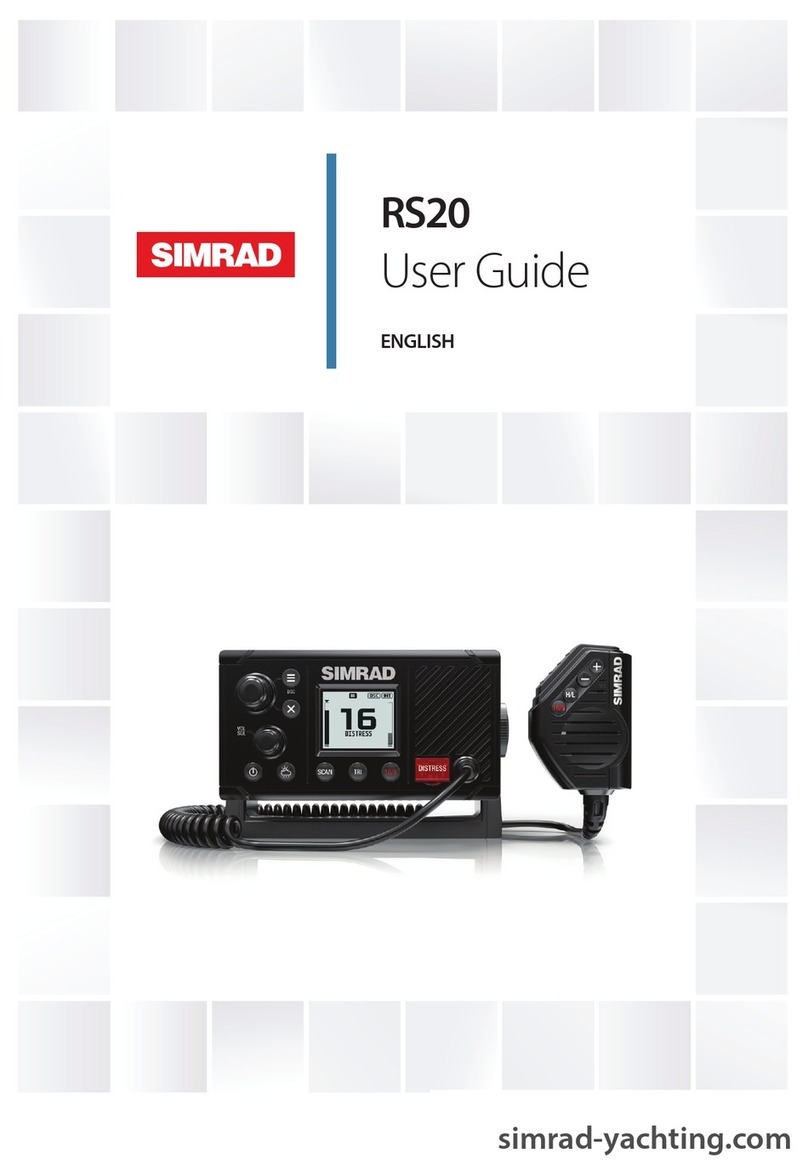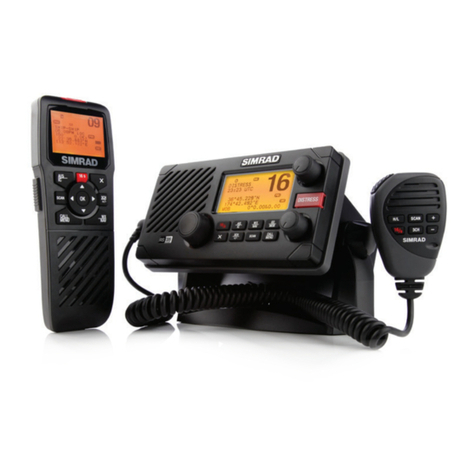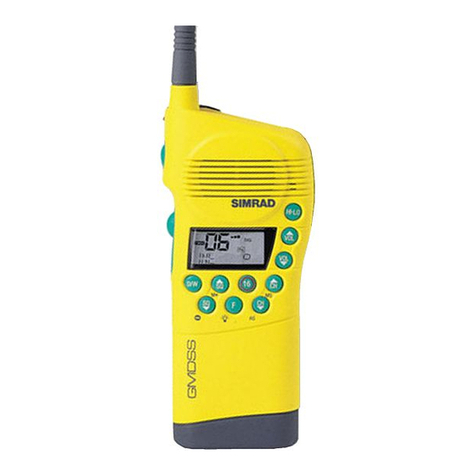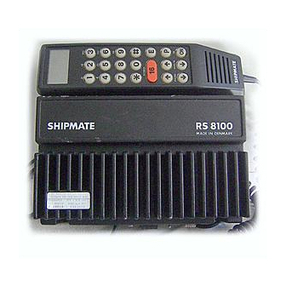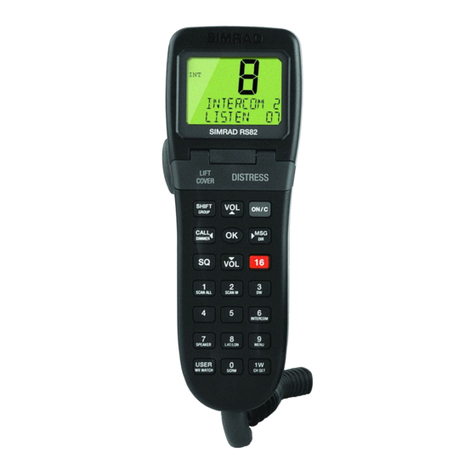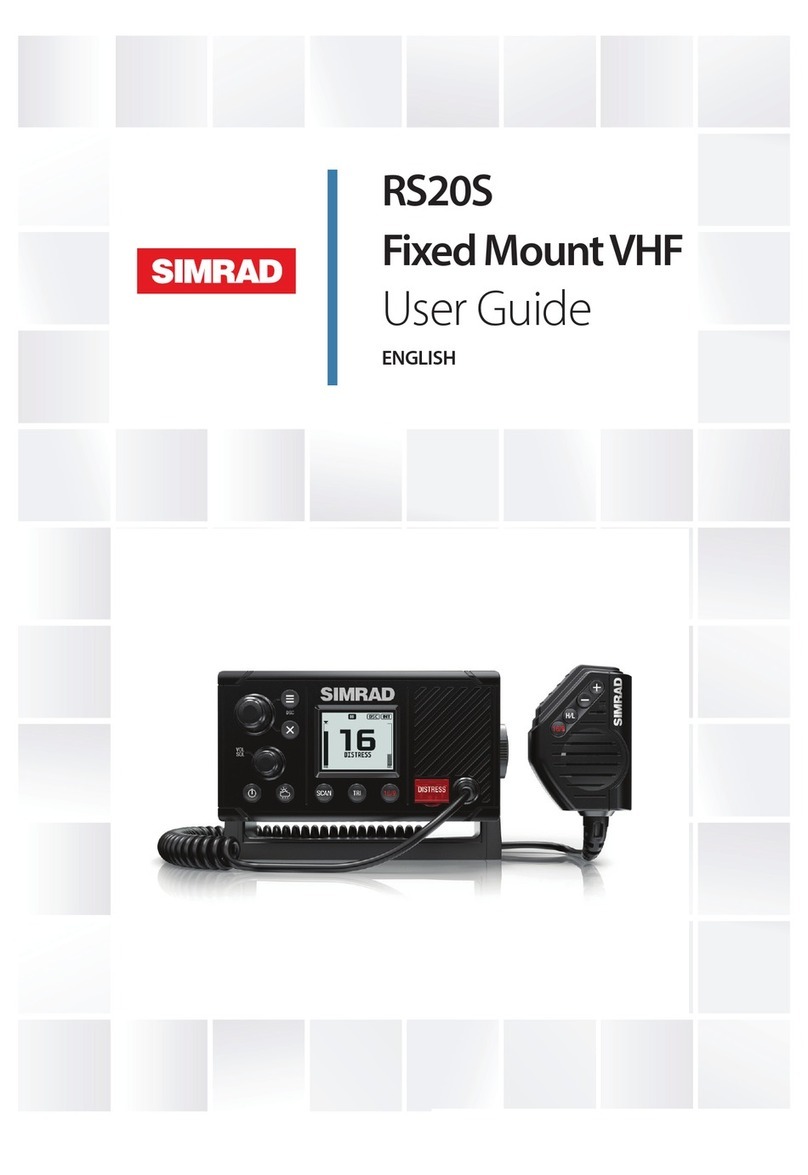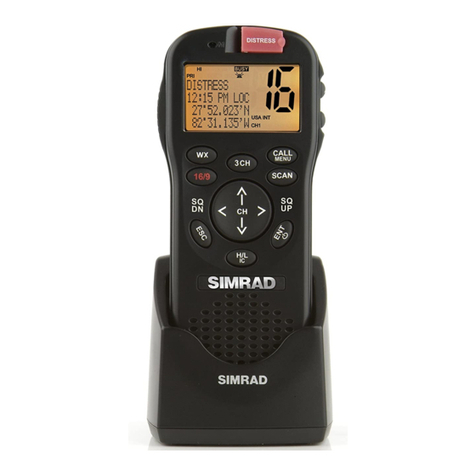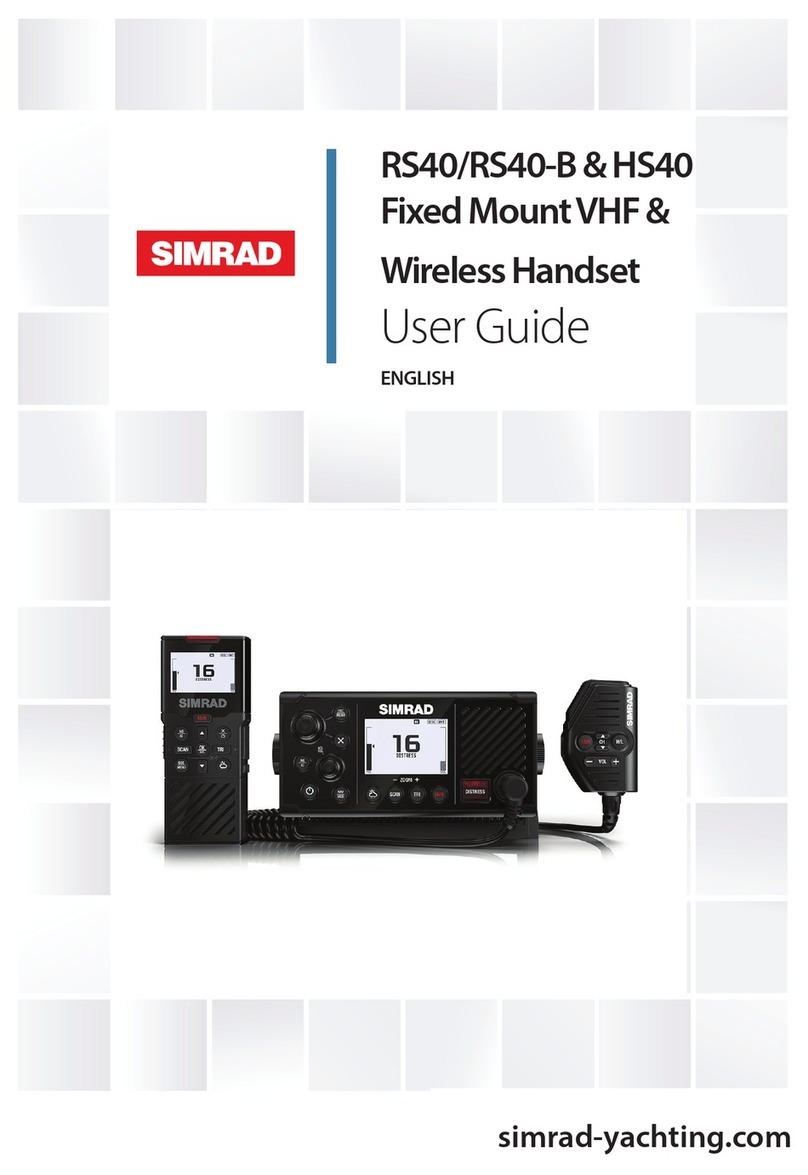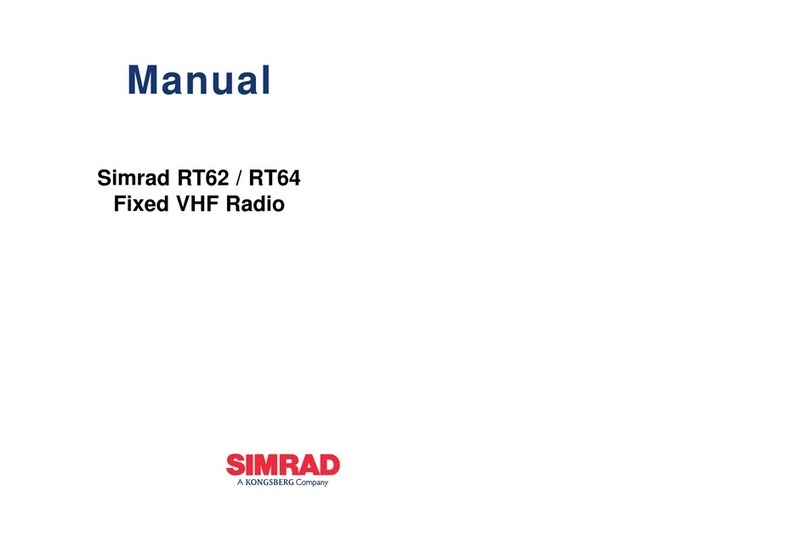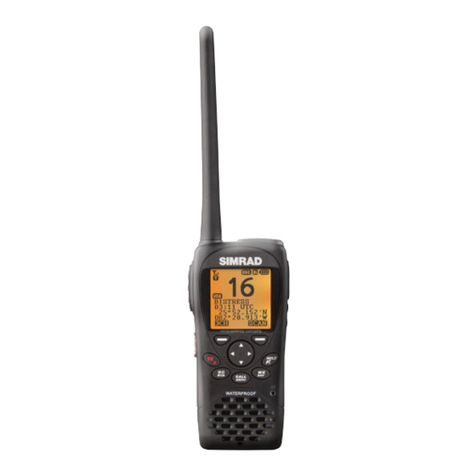3
Contents for
RS8400, RS8300, RS8300 SD, and RS8300 SOS
Distress call: Manual .....................................................................................................4
Distress call: Automatic - only RS8300 SOS)..............................................................5
Programming of DSC identity number........................................................................6
Introduction ....................................................................................................................7
Handset Status Displays ................................................................................................8
Handset Keys ............................................................................................................... 10
ON/OFF Switch ............................................................................................................11
Position Input (RS8300 SOS only) ............................................................................ 12
Channel Selection ........................................................................................................ 14
International and US Channels ................................................................................. 15
Output Power .............................................................................................................. 16
Squelch ......................................................................................................................... 16
Volume .......................................................................................................................... 16
Dual Watch .................................................................................................................. 17
Scan All......................................................................................................................... 18
Exclusions from Scan All ............................................................................................ 19
Scan programme.......................................................................................................... 20
Edit of Scan Programme ............................................................................................ 21
Intercom (not RS8300 standard) ............................................................................... 22
Muting .......................................................................................................................... 23
Illumination.................................................................................................................. 23
Installation ................................................................................................................... 24
- Dual system and watertight socket (not RS8300 standard)
Optional PA-HAILER (not RS8300 standard) ........................................................ 29
Technical data .............................................................................................................. 30
International Marine VHF Channels ....................................................................... 32
US & Canadian Marine VHF Channels ................................................................... 33
InternationalWarranty ................................................................................................ 34
SIMRADdistributors ................................................................................................... 35
